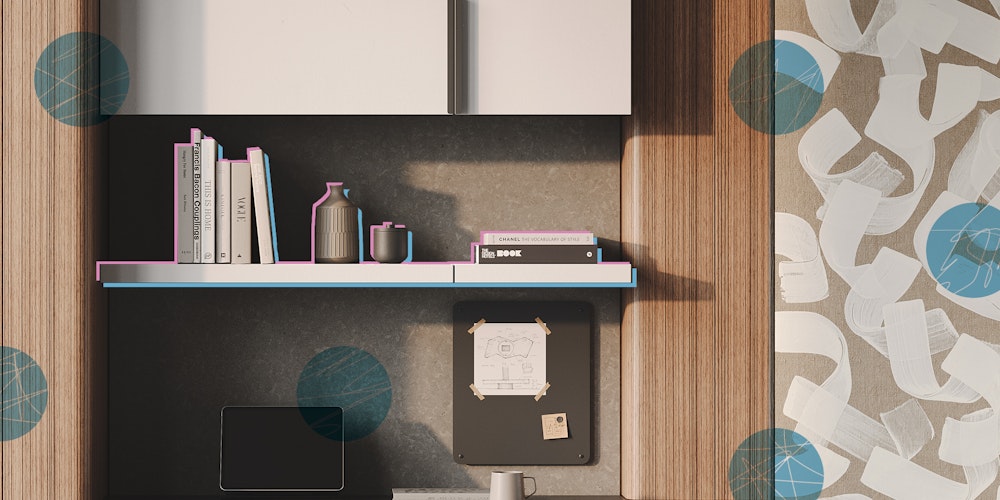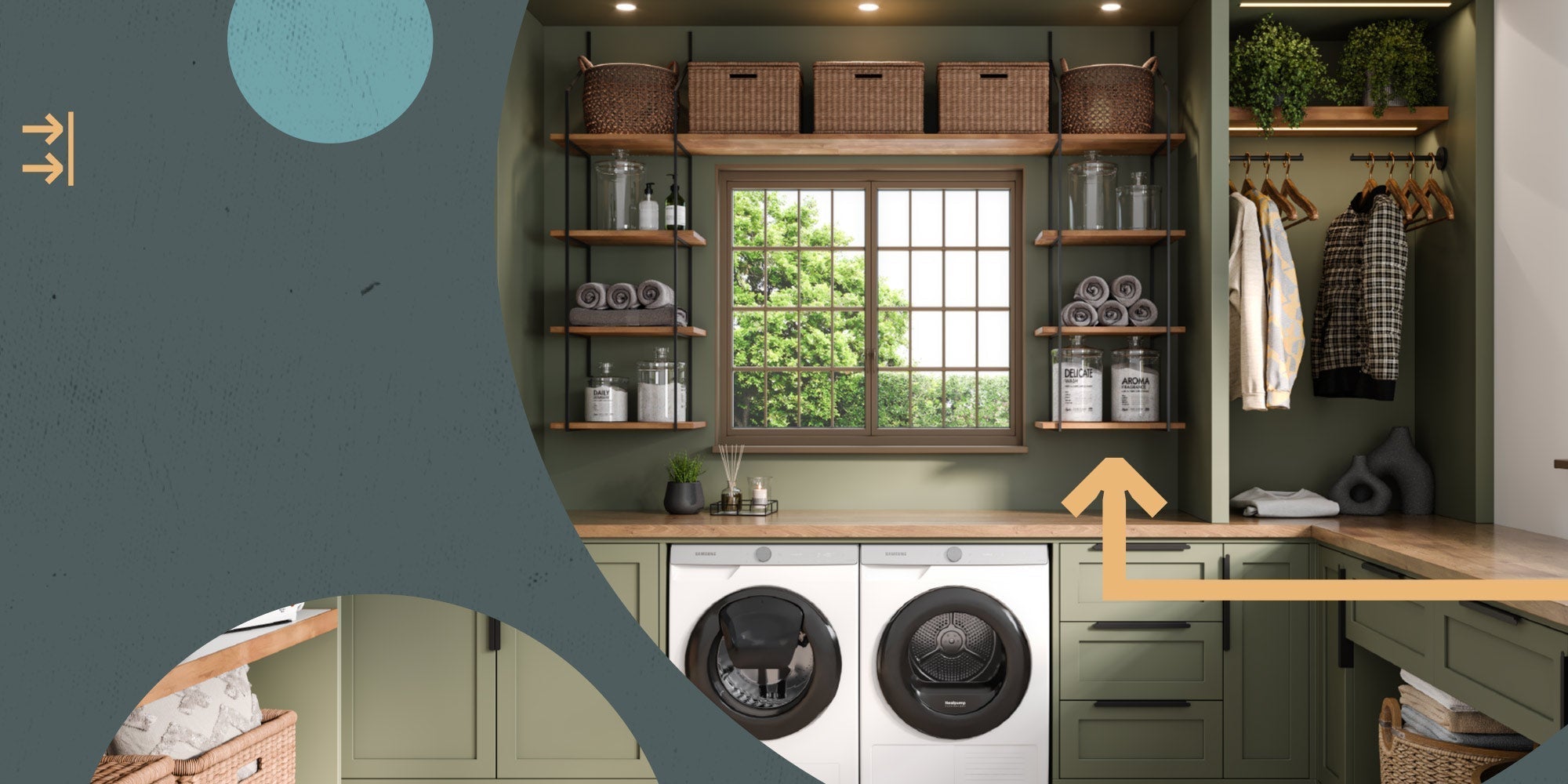During the lockdown and sheltering-in-place, homeowners and renters alike had the opportunity to take a long, hard look at their living spaces. Home dwellers realized they had neglected their interiors (as well as the garage and backyard) trying to balance their lives with work and play. Happy hours, nights on the town, gym workouts, yoga classes, and outdoor activities took precedence over decorating, designing, and organizing homes. As a result, homes lacked harmony.
Especially with the new WFH revolution, remote employees had to come up with a quick solution, where they could focus and be productive at work, which posed a challenge of its own for those who didn’t have a designated home office. This forced remote workers to buckle down in common areas such as the kitchen table or on the couch with endless family interruptions.
Spending more time indoors gave homeowners an incentive to do all-out renovations and remodels. Some inhabitants addressed their homes one chunk at a time by buying storage solutions for organization, putting a desk in the corner of the living room, decluttering spaces by throwing away home decor they no longer used, and bringing in plants to clear out toxins and bring oxygen indoors.
If you haven’t gotten around to addressing your home’s disharmony in the last couple of years and are ready for some solutions (and peace of mind), follow these organizational and design tips to create harmony in your living space.

Harmony in Design
Harmony in home design means that each element in the space is connected to the larger whole, in other words, cohesive. Harmony is achieved through balance and the repetition (unity) of design elements (color, form, line, shape, space, and texture) to create a cohesive flow throughout the entire space.
For example, groupings and vignettes arranged on floating shelves, coffee tables, and individual spaces flow into the rest of the space to form a cohesive whole. Just like the name of the Police’s album title, homes have “Synchronicity.”
Balance

You’ve likely heard of the importance of a well-balanced life. The same principle holds true for maintaining balance in your home design. Visual harmony is achieved through balance, or equal distribution of design elements such as weight and color in a home. A room with heavier items or too much color on one side of a wall or space, and little, or none, on the other will appear off-balance.
One way to remedy this situation is with symmetry, mirroring like colors, shapes, and sizes in decor items such as furniture and shelving. In traditional design, two matching sofas that face each other are one way to achieve symmetry. In a modern-style living room, side chairs of the same size and color anchored on both sides of a rug is another way to achieve symmetry. To achieve symmetry with home decor, consider placing two bookends on a bookshelf, or two tall objects of similar weight on a credenza or floating shelves.
Negative Space

Negative space, also known as empty space, or white space is the amount of around each object in a design composition. When decorative accessories are too close together they can appear cluttered and chaotic. In the same way, too much empty space can make a room feel bare.
How To Create Harmony With Floating Shelves
Aside from making a stylish storage solution, floating shelves provide a great way to pull a space together and create harmony (and peace of mind) in a room. For the purpose of this article, we’ll focus on problems and solutions for the rooms where we spend the most time: the kitchen, living room, bedroom, and bathroom.
Fill In The Gaps on an Empty Wall

In the Kitchen:
A blank wall on one side of the kitchen looks empty and bare. The weight of the room feels off-balance with too many items on one side and nothing on the other. An easy fix is to install a few floating shelves the length of the gap on the empty wall. To create harmony with your kitchen’s design, choose a shelf wood tone that matches the lower cabinets and the legs of the barstools around an island.
In the Living Room:
Do you have a fireplace without a mantel that you’ve been meaning to build or buy? You can also make a mantel with a long floating shelf. Fill up the space with seasonal decorations such as ornaments and stockings during the holidays, and swap them out for a different look for every season. If you lack a home office but have an alcove off the living room that’s not being used, consider turning into an office. Mount a few shelves above a desk (or buy a floating desk), pick up a divider screen for some privacy, and you’re good to go.
In the Bedroom:
Whether it’s a primary bedroom or one of your kids’ bedrooms, you can create harmony by mounting wall shelves on a blank wall that needs some love. Choose a wood tone like white oak that matches a white oak headboard or a color that matches one of the wall paint colors in your kid’s room. You can also pick a color that matches the furniture or kid’s craft table.
In the Bathroom:
Do you have a wall in a corner or by the closet in your bathroom that looks empty compared to the other walls in the room? You can give it some personality with a wall of plants. A short wall is an ideal spot to display plants that don’t need direct light. Another option is a faux plant wall. Some silk faux plants look real. For an asymmetrical or zigzagged look, vary your shelf lengths.
Open Up a Crowded Wall

In the Kitchen:
If you have wall-to-wall kitchen cabinets, it provides good storage, but it doesn’t do much for aesthetics. Too many square cabinets can make everything feel boxy and closed in. To open the space and make it less overwhelming, consider taking down a couple of cabinets and replacing them with a couple of floating shelves. You won’t only open the space, you’ll have a space to display plants, decorative objects, cookbooks, and your favorite pottery and dishes.
In the Bedroom:
If your long dresser, full-length mirror, cat’s litter box, and monster-sized bookcase in the corner take up your floor space, consider swapping out your bookcase for floating shelves. You can place them on both sides of your dresser, and even above the litter box, and open up the room.
In the Bathroom:
Isn’t it time to throw that over-the-toilet shelving unit crammed with stuff? We say yes. Consider replacing it with wall shelves. Choose a color or wood tone that coordinates with your vanity. For a camouflage look, choose a color in a powder-coated metal finish that matches the paint color on your walls. Shelfology has more than 30 colors to choose from. Make sure to hang the bottom shelf with enough room to open the toilet tank when you need to replace plumbing parts or change the deodorizer.
Add Warmth

In the Kitchen:
An all-gray kitchen with gray or white walls and a subway tile backsplash is a cool modern look but can appear cold and sterile. You can add warmth, texture, and character to your kitchen with wooden floating shelves. Texture is that special element that makes a space warm and cozy, and feel like a home. Texture can be achieved with wood, especially if the wood has a lot of wood grain as well as organic fabrics such as jute or sisal area rugs. To create a cohesive look, choose a shelf style that matches the floor or a wood tone in the living room if you have an open-concept kitchen living space.
In the Living Room:
White walls in a living room do make a great blank canvas, but when the walls are all painted white, it can lack warmth. To add some texture which also adds warmth, consider a statement wall on a large empathy wall or above the sofa. Style your shelves with decorative items that have texture such as handmade pottery and artwork.
In the Bedroom:
A good way to add texture in a bedroom is with a couple of toss pillows and a throw blanket in an organic fabric on the bed. But you can also add warmth to the bedroom with wooden shelving. Choose a dark color for contrast in a light room and don’t forget to add plants.
In the Bathroom:
If your bathroom lacks warmth and texture, the solution is baskets. You can use baskets on the floor to place towels. To tie in the look, hang a floating shelf on a wall with baskets to conceal toiletries. Choose a few baskets that coordinate with other basket styles, although they don’t need to match.
Achieve Balance With Symmetry

In the Kitchen:
You can balance a room by installing floating shelves on both sides of the stove. Make sure to distribute the weight evenly on both sides whether you’re displaying mixing bowls and cookbooks, or spices that you can sprinkle right into the pan to stir into your secret sauce. For an attractive display, label spices, sugar, and flour in clear glass jars with tops that coordinate with your stainless steel appliances or wooden cabinets, or kitchen island.
In the Living Room:
A fireplace makes a lovely focal point in a living room. But if you have walls on both sides of a fireplace with nothing on them, the space can look dull. Consider framing your fireplace with floating shelves to balance both sides. You can showcase your books, art, and decorative objects. For art, you can select picture frames that match the furniture’s arms and legs. For decorative accessories, choose a finish that coordinates with the finish on your living room light fixtures to create harmony in your space.
In the Bedroom:
If your bed is pushed into a corner or you only have one nightstand, you can elevate your bedroom by installing two floating nightstands and moving your bed to the center of the wall. With two floating nightstands, you’ll not only add symmetry to your bedroom, but you’ll also take back your floor space.
In the Bathroom:
If you have a vanity with double sinks, you likely have some empty space on the wall. This area is the perfect space to create a stylish display with floating shelves. Place white towels on shelves that tie into nearly any decor theme, from modern to a spa feel, from farmhouse to rustic, and more. Putting items like shaving cream and combs in decorative containers on shelves will help keep your counter area clean and decluttered.
With a few home decor touches and interior design principles, you can design and decorate a home that achieves balance, harmony, and peace of mind, and a space you love living in.




Share:
7 Beautiful Entryway & Mudroom Storage Ideas
Floating Shelf Depth Guide: How Depth Impacts Stability